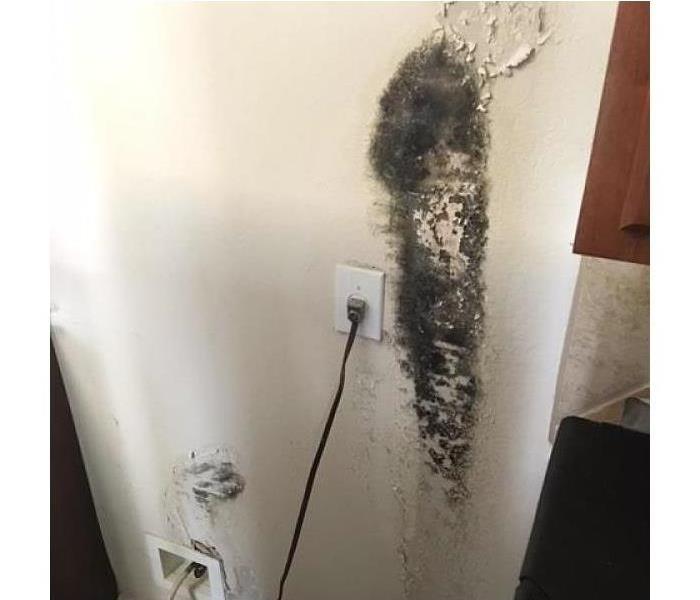Where Does Black Mold Grow?
12/12/2022 (Permalink)
Everything to Know About Black Mold
Black mold is a term that is widely used, even though it is not always accurate. A more precise definition of black mold would be "a family of fungi that produces spores in the form of conidia." The fungus is called "stain fungi," because its hyphae stain dead plant material and wood, which then turns black over time. There are many species of stain fungi, but some are harmful to humans and animals. If you have found that your home has black mold growing in it, take the necessary steps to get rid of it before any other problems arise!
What is Black Mold?
You might be wondering what black mold is, and how it can grow in your home. Black mold is actually a type of fungus that grows when you have excessive moisture in the air. The mold produces spores that are spread throughout the house by air currents. These spores can then grow on almost any surface within your home, including carpets, hardwood floors and even drywall if there's no ventilation to prevent it from growing.
Identifying Black Mold
It's possible that you might have black mold in your home, but don't know it. Here are some signs of black mold:
- The smell of musty or dampness in the air.
- An unusual number of insects in a room (such as ants, flies and roaches).
- Mold stains on walls or other surfaces.
- Water-damaged ceilings or walls.
Where Does Black Mold Grow?
Black mold can grow on the surfaces of many different materials, including wood and paper. In fact, black mold is actually not a single fungus but rather an entire group of molds called stachybotrys chartarum. These fungi thrive in dark, damp environments such as basements and crawlspaces. Black mold tends to be attracted to organic materials like drywall or cardboard boxes because they provide food for the mold growth (as well as moisture).
Black mold thrives when there's an excess amount of humidity in the air—a common problem in bathrooms or kitchens where hot showers or baths may lead to build-up of steam on surfaces. Some common surfaces for mold to grow include:
- Tile grout lines on the shower wall or floor
- Shower curtains
- Wallpaper backing behind faucet handles (if the wallpaper has not been properly sealed).
Preventing Black Mold Growth
To prevent the growth of black mold, you'll need to maintain indoor humidity levels below 60%. Black mold thrives in damp, humid environments where the air is stagnant. If your home has a dehumidifier installed or can afford an energy-efficient one, use it regularly to lower indoor humidity and keep your home safe from black mold spores.
If you have carpeting or flooring that's been contaminated with water due to flooding or leaks, clean up any spills immediately using soap and water. A HEPA filter vacuum will help remove black mold spores from hardwood floors and carpets without spreading them further into the air of your home.
If you have mold in your San Antonio, TX home, you need to get a professional in to remediate it and get you back to normal. Call SERVPRO of Stone Oak. We are available 24/7 and can help you determine the best course of action.
Hopefully, this article has helped you better understand where black mold is most likely to grow in your home. If you think that your home may be affected by black mold, I encourage you to schedule an inspection with experts today!






 24/7 Emergency Service
24/7 Emergency Service
